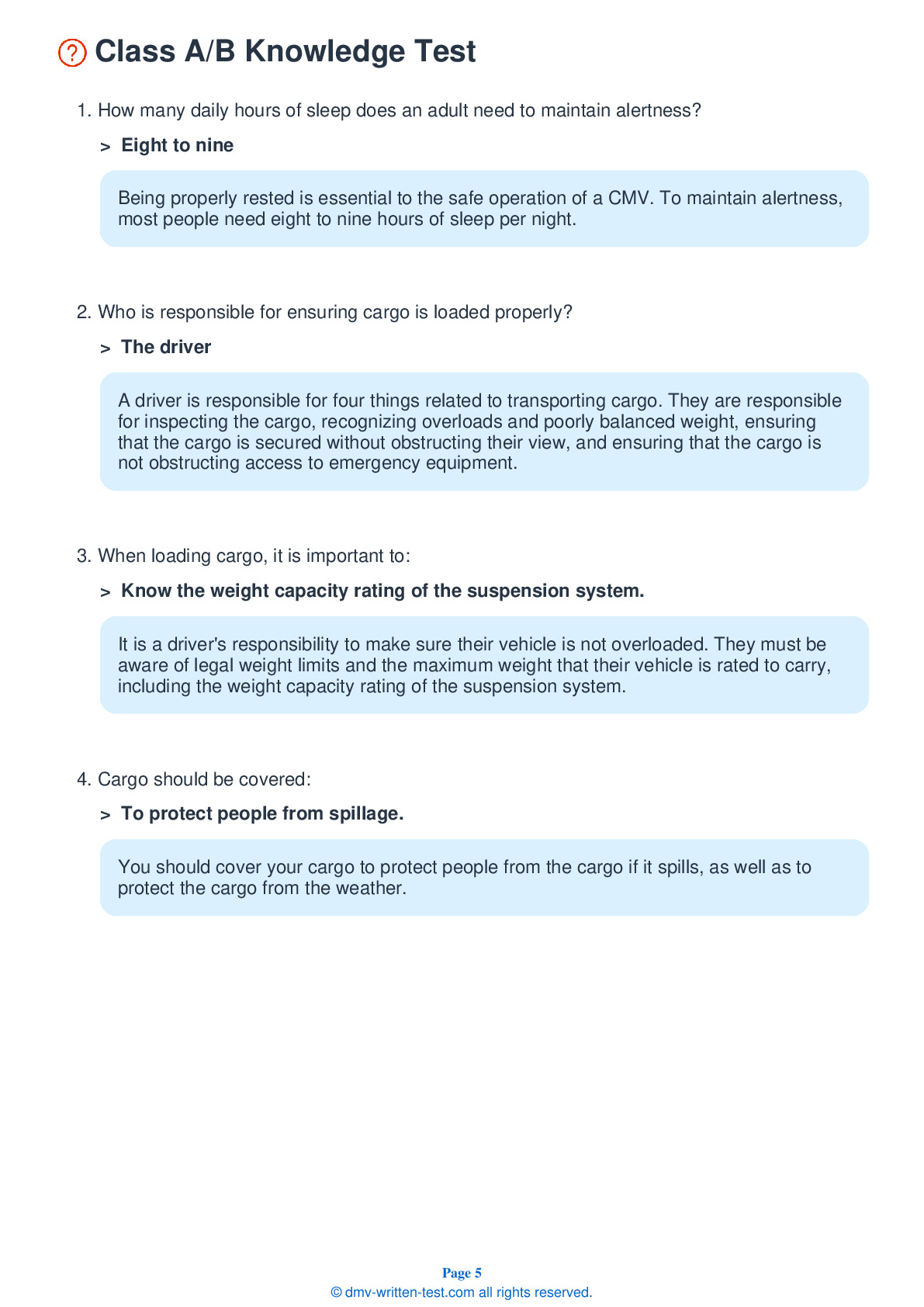Air Brakes
This endorsement is required for driving a vehicle with air brakes. To receive this endorsement, applicants must pass a written test. The test consists of 25 multiple choice questions. Each question has four answer choices. To pass, the applicant must answer at least 20 questions correctly. Test questions come from the Washington D.C. Commercial Driver License Manual. Questions come from the chapter covering: Air Brakes. The Air Brakes endorsement may be used with the Class A, B or C CDL.
Number of Question
Passing Score
19. Emergency brakes:
Explanation
All trucks, truck tractors, and buses must be equipped with emergency brakes and parking brakes. These brakes must be held by mechanical force.
20. Spring brakes come on:
Explanation
Spring brakes come on automatically when air pressure drops to an unsafe psi level. Instead of waiting for the spring brakes to automatically activate, you should safely exit the road as soon as you notice the low pressure warning signal and bring your vehicle to a stop while you are still able to control the brakes.
21. Some air brake systems use alcohol:
Explanation
Some air brake systems contain an alcohol evaporator. This device introduces alcohol into the braking system to inhibit the formation of ice.
22. To stop in a vehicle that uses air brakes, the driver should:
Explanation
To make a normal stop in a vehicle with air brakes, push the brake pedal down. The harder the pedal is pressed, the more air pressure is released.
23. You should not use the parking brake:
Explanation
A parking brake should not be used if the vehicle's brakes are very hot from use on a steep downgrade or if the brakes are very wet and temperatures are freezing. Using the parking brake when brakes are hot could cause damage to the brakes, and using the brakes when they are wet in freezing weather may cause the brakes to ice up, rendering the vehicle immobile.
24. Test the low pressure warning signal:
Explanation
It is essential that your low pressure warning light function properly. After allowing the system to charge, you can test the warning signal by rapidly applying and releasing the brake pedal. This will release air from the braking system and the warning signal should come on when pressure drops to a dangerous level.
25. Vehicles with dual air brake systems:
Explanation




